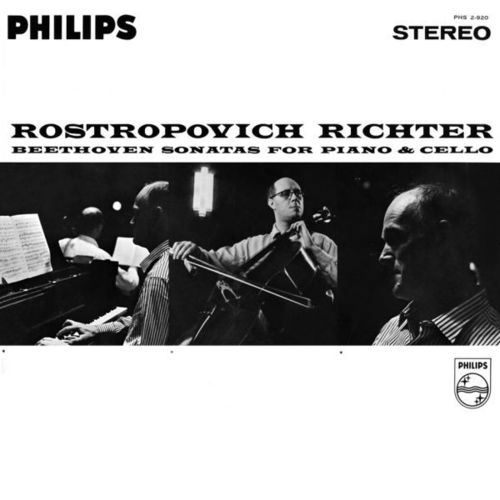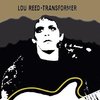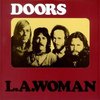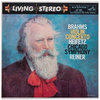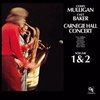AAA 100% Analogue This LP was Remastered using Pure Analogue Components Only from the Master Tapes through to the Cutting Head
Speakers Corner / Philips - PHS 2-920 - 180 Gram Virgin Vinyl
AAA 100% Analogue - Limited Edition
Pure Analogue Audiophile Mastering - Pressed at Pallas Germany
The Absolute Sound Super Disc List 2016 TAS Harry Pearson Super LP List
Beethoven: Sonatas for Piano and Violoncello Nos. 1-5 - Mstislav Rostropovich (vc) and Sviatoslav Richter (p)
Possessing a complete recording of Beethoven's Cello Sonatas gives far more satisfaction than merely having the set to fill the shelves. On the one hand it offers one the opportunity to compare Beethoven's art of composition at various stages in his life. And on the other hand one can already recognize in the early Opus 5 how he breaks with the traditional sonata in which the solo instrument merely provides an accompaniment and treats the two instruments as equal partners in the creation of the movements.
Richter and Rostropovich devote themselves to their task with verve and freshness. The two early works are marked by the rich and full sound of the cello and an elegantly performed piano part, while the two Russian musicians foster a contemplative, introverted style in the A major Sonata. This respectful approach also lends itself well to the C major Sonata where the free, fantasia-like character with wide-ranging shading is shown off to advantage.
Beethoven's break with the traditional sonata-form layout is carried to extremes in the D major Sonata, where the cello ignores the powerful theme on the piano in the first movement. The work's brittleness is effectively revealed by the two musicians in the transition from the sensitive Adagio to the austere, freely worked final Fugato, while their resolute and analytical approach to the work and technical prowess on their instruments is highly rewarding.
Which brings us to our other contender, the subject of this Speakers Corner double-LP set. Like any live performance, the EMI is less than note-perfect, notable more for its gusto than its precision -- the gusts being a little too strong for some tastes. Rostropovich and Richter, recorded some six years earlier, offer a far more classically correct reading of these complex and involved pieces. Such all-star pairings can fall flat, as the egos compete for attention, but here the two "R"s strike a perfect instrumental balance, passing lead and support roles seamlessly from one to t’other as they effortlessly transit the two decades of musical development that separate the First and Fifth Sonatas. The performance, full of poise, control and contained power, is hard to fault, and if there are bones to be picked, they lie in the recording itself. Devoid of the unavoidable audience noise that intrudes on the EMI set, the Philips also lacks the explicit separation and scaling of the later recording. Instead, the instruments are big, bold and vibrant, full of bottom-end power and weight, but slightly pushed together. It’s a small price to pay for the expressive quality and technique that’s on display, while dynamics and impact are both excellent, the rendering of Richter’s left hand being particularly impressive. Tempi are flawless, and these two stellar performers certainly bring out the best from each other and the score.
So which performance should you go for? With decent original copies of the EMI running out at around £80 a throw, it’s a bit of a moot point. Really, you should have both, so that you can enjoy the contrasting faces on either side of this musical coin. I wouldn’t want to be without the Barenboim/du Pre set, but the availability of a really good reissue of the Richter/Rostropovich is welcome indeed. My original pressing is definitely showing its age, and the Speakers Corner betters it in every department, but most notably in terms of its solid bottom end and smoother, less insistent treble.
RCA, Mercury and Decca might get all the attention in the collectable-record market, but it is a mistake to overlook the likes of Philips, whose early "Hi-Fi Stereo" pressings offer impressive performances by many major artists, captured in powerful recordings of great presence and sonic authority. This set was no exception, and Speakers Corner has done a fantastic job of preserving its virtues. This is one reissue that you can (and should) buy with complete confidence.
Musicians:
Mstislav Rostropovich, cello
Sviatoslav Richter, piano
: Ludwig van Beethoven (1770-1827)
1. Sonata for Cello & Piano No. 1 in F, Op. 5 No. 1
2. Sonata for Cello & Piano No. 2 in G minor, Op. 5 No.2
3. Sonata for Cello & Piano No. 3 in A, op. 69
4. Sonata for Cello & Piano No. 4 in C, op. 102 No. 1
5. Sonata for Cello & Piano No. 5 in D, op. 102 No. 2
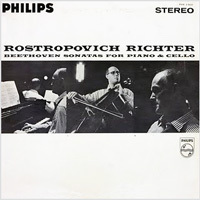
20 Years pure Analogue
Are your records completely analogue?
Yes! This we guarantee!
As a matter of principle, only analogue masters are used, and the necessary cutting delay is also analogue. All our cutting engineers use only Neumann cutting consoles, and these too are analogue. The only exception is where a recording has been made – either partly or entirely – using digital technology, but we do not have such items in our catalogue at the present time
Are your records cut from the original masters?
In our re-releases it is our aim to faithfully reproduce the original intentions of the musicians and recording engineers which, however, could not be realised at the time due to technical limitations. Faithfulness to the original is our top priority, not the interpretation of the original: there is no such thing as a “Speakers Corner Sound”. Naturally, the best results are obtained when the original master is used. Therefore we always try to locate these and use them for cutting. Should this not be possible, – because the original tape is defective or has disappeared, for example – we do accept a first-generation copy. But this remains an absolute exception for us.
Who cuts the records?
In order to obtain the most faithful reproduction of the original, we have the lacquers cut on the spot, by engineers who, on the whole, have been dealing with such tapes for many years. Some are even cut by the very same engineer who cut the original lacquers of the first release. Over the years the following engineers have been and still are working for us: Tony Hawkins, Willem Makkee, Kevin Gray, Maarten de Boer, Scott Hull, and Ray Staff, to name but a few.
At the beginning of the ‘90s, in the early days of audiophile vinyl re-releases, the reissue policy was fairly straightforward. Companies such as DCC Compact Classics, Mobile Fidelity, Classic Records and others, including of course Speakers Corner, all maintained a mutual, unwritten code of ethics: we would manufacture records sourced only from analogue tapes.
Vinyl’s newfound popularity has led many other companies to jump on the bandwagon in the hope of securing a corner of the market. Very often they are not so ethical and use every imaginable source from which to master: CDs, LPs, digital files and even MP3s.
Even some who do use an analogue tape source employ a digital delay line, a misguided ’80s and ‘90s digital technology that replaces the analogue preview head originally used to “tell” the cutter head in advance what was about to happen musically, so it could adjust the groove “pitch” (the distance between the grooves) to make room for wide dynamic swings and large low frequency excursions. Over time analogue preview heads became more rare and thus expensive.
So while the low bit rate (less resolution than a 16 bit CD) digital delay line is less expensive and easier to use than an analogue “preview head”, its use, ironically, results in lacquers cut from the low bit rate digital signal instead of from the analogue source!
Speakers Corner wishes to make clear that it produces lacquers using only original master tapes and an entirely analogue cutting system. New metal stampers used to press records are produced from that lacquer. The only exceptions are when existing metal parts are superior to new ones that might be cut, which includes our release of “Elvis is Back”, which was cut by Stan Ricker or several titles from our Philips Classics series, where were cut in the 1990s using original master tapes by Willem Makkee at the Emil Berliner Studios. In those cases we used only the original “mother” to produce new stampers.
In addition, we admit to having one digital recording in our catalogue: Alan Parsons’ “Eye in the Sky”, which was recorded digitally but mixed to analogue tape that we used to cut lacquers.
In closing, we want to insure our loyal customers that, with but a few exceptions as noted, our releases are “AAA”— analogue tape, an all analogue cutting system, and newly cut lacquers.
